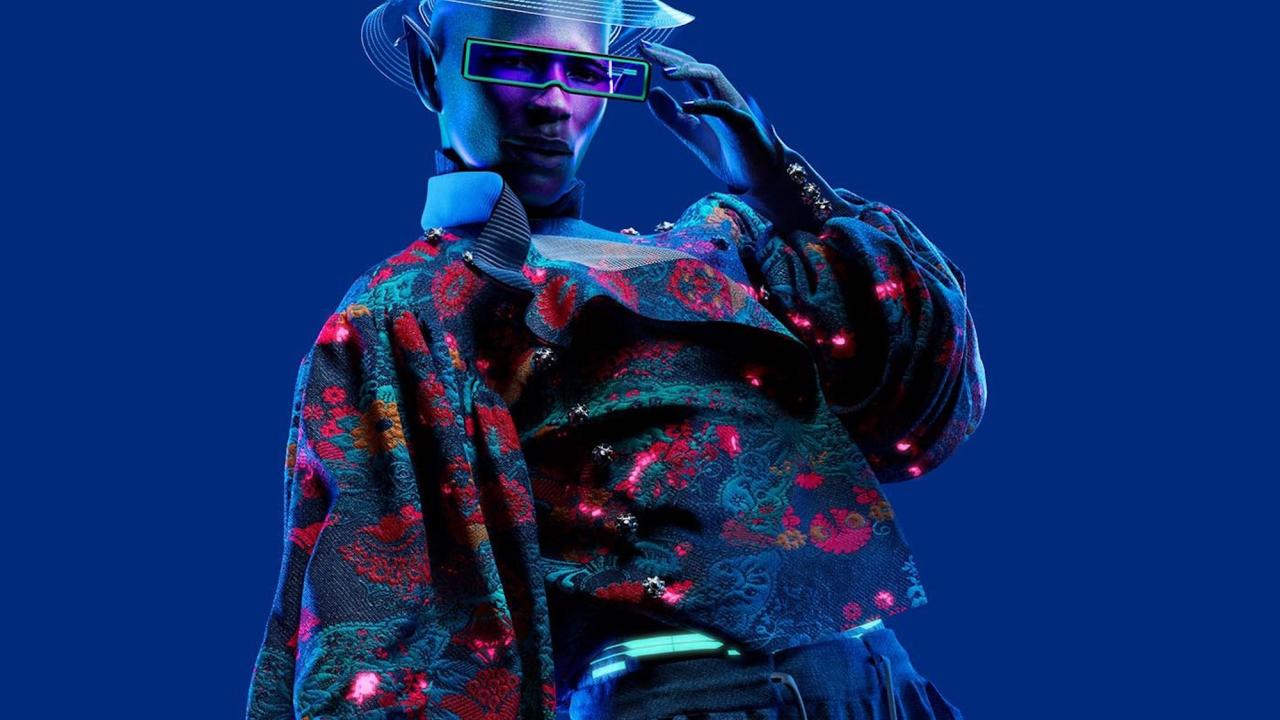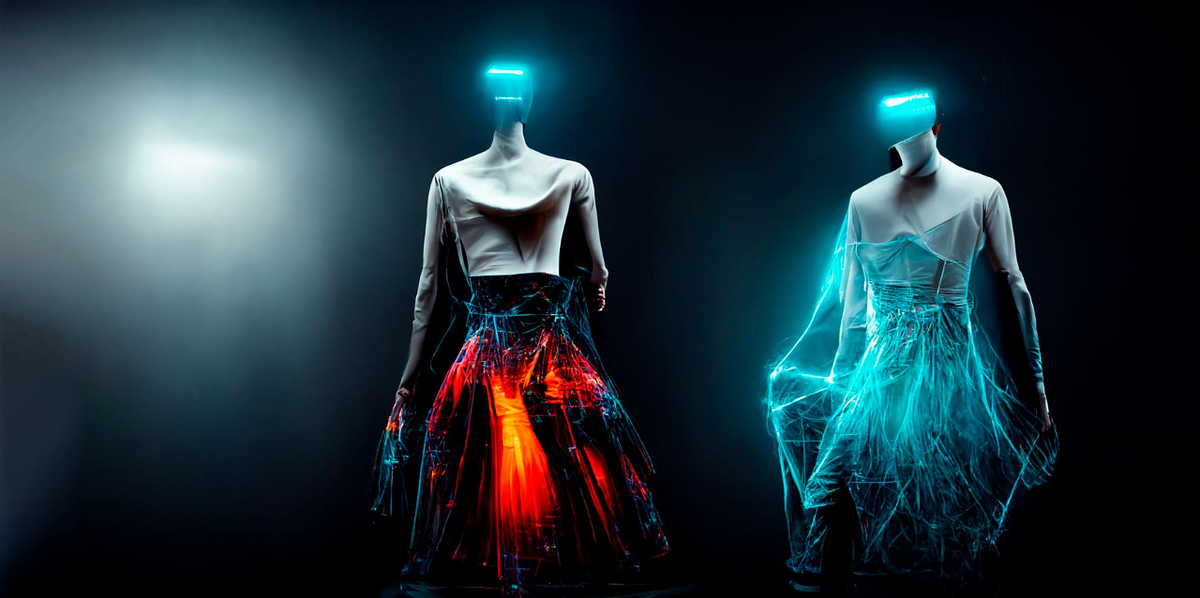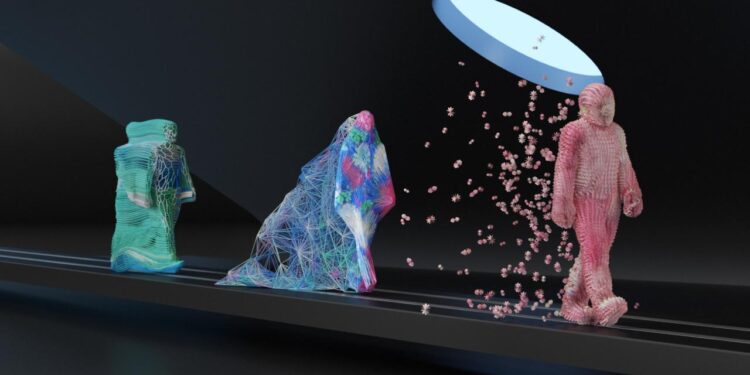In a world increasingly defined by pixels and online avatars, a new frontier of style is emerging. For centuries, fashion has been a tactile, physical art form, defined by fabric, texture, and a sense of touch. Today, a new and transformative force is blurring the line between the physical and the virtual: digital fashion. This is not a novelty or a fleeting trend; it is a profound and fundamental shift in how we design, create, consume, and experience clothing. This comprehensive article delves into the profound impact of digital fashion, exploring the foundational technologies that make this a reality, the diverse applications that are already reshaping our world, and the immense opportunities and critical challenges that lie ahead as we step into this immersive new world.
Historically, the fashion industry has been a model of excess. From the energy-intensive production of textiles to the waste generated by “fast fashion,” the environmental footprint of the industry is staggering. The traditional design and production process is also slow and expensive, with designers needing to create multiple physical samples before a garment goes into production. Digital fashion shatters this paradigm. It allows designers to create clothing that exists only in the digital realm, a process that is both more sustainable and more efficient. A designer can now create an entire collection in a virtual space, a process that eliminates the need for physical samples, reduces waste, and allows for a new level of creativity that is not constrained by the laws of physics.
The global interest in digital fashion is skyrocketing, with major brands from Gucci to Balenciaga entering the digital space. The convergence of powerful new technologies—from 3D modeling and virtual reality (VR) to blockchain and AI—is making a new era of digital fashion not just a possibility, but a necessity for a competitive and ethical future. From a virtual runway show in the metaverse to a digital-only garment that a person can wear on their avatar, the applications are as diverse as they are profound. This is more than a technological shift; it is a profound societal one, where we are beginning to redefine our relationship with our clothes, our identity, and our digital selves. The digital fashion revolution is here, and it is the new horizon for an industry that is ready for change.

The Pillars of Digital Fashion

The power of digital fashion is not a single piece of technology but a sophisticated and integrated ecosystem that is built on several foundational pillars.
A. 3D Design and Digital Rendering
The foundational tool of digital fashion is 3D design and digital rendering. Designers use specialized software, such as Clo3D and Blender, to create a three-dimensional model of a garment. They can then drape the digital fabric onto a virtual avatar, simulate how the fabric would move and drape in a real-world environment, and apply a wide range of textures, colors, and patterns. This allows a designer to create a realistic and highly detailed virtual garment without ever touching a piece of fabric. The final step is to “render” the digital garment, a process that turns the 3D model into a photorealistic image or video. This is the new canvas of the fashion industry, a digital one.
B. Virtual Reality (VR) and Augmented Reality (AR)
While 3D design is the creation of digital fashion, virtual reality (VR) and augmented reality (AR) are the primary ways we experience it. VR is being used to create immersive virtual runway shows, where a user can enter a virtual world and experience a fashion show from a front-row seat. AR, on the other hand, is being used to overlay digital clothing onto a person’s physical body in real-time. A user can use their phone to “try on” a new digital-only garment, see how it fits, and take a picture of themselves wearing it. This is a new form of digital dressing that allows a person to express their style in a virtual world without having to buy a physical garment.
C. Blockchain and Non-Fungible Tokens (NFTs)
The economic engine of digital fashion is blockchain technology and Non-Fungible Tokens (NFTs). A digital-only garment is a digital asset, and to create a sense of ownership and scarcity, it must be stored on a decentralized ledger. This is where blockchain comes in. An NFT is a digital certificate of ownership that is recorded on a blockchain. When a person buys a digital-only garment, they are buying the NFT that proves they are the sole owner of that garment. This creates a new, verifiable economy for digital goods, where a piece of digital clothing can have a real, verifiable value and can be bought, sold, and traded in a digital marketplace.
D. Artificial Intelligence (AI) and Generative Design
The power of artificial intelligence (AI) and generative design is taking digital fashion to the next level. A designer can use an AI to generate a wide range of unique patterns, textures, and even entire clothing designs based on a simple prompt. An AI can also be used to create a more personalized shopping experience, by analyzing a person’s style and recommending digital-only garments that are a perfect fit. This is a powerful synergy between creativity and technology, where the AI is not just a tool but a creative partner that is helping a designer to explore new and imaginative possibilities.
Applications and Benefits of Digital Fashion

The benefits of digital fashion are not limited to a single sector; they are being applied to a diverse array of industries, creating new efficiencies and opportunities.
A. A More Sustainable and Ethical Fashion Industry
The most significant benefit of digital fashion is its potential to create a more sustainable and ethical fashion industry. The traditional fashion industry is a major source of pollution and waste, from the millions of gallons of water used to produce a single pair of jeans to the tonnes of clothing that end up in landfills. Digital fashion is a zero-waste solution. It eliminates the need for physical samples, reduces the carbon footprint of production, and can be used to create clothing that is more ethically sourced and more transparent. This is a shift from an industry that is a major source of environmental degradation to an industry that is a leader in sustainability.
B. New Revenue Streams for Fashion Brands
Digital fashion is creating a new and highly profitable revenue stream for fashion brands. Brands can now sell digital-only garments as NFTs, a process that has a much higher profit margin than a traditional physical garment. This allows a brand to reach a new and highly engaged audience of digital natives, and to create a new kind of brand loyalty that is built on a shared digital experience. The digital fashion market is also a great testing ground for new designs, as a brand can release a digital-only garment to see how it performs before committing to a physical production.
C. A New Form of Self-Expression and Identity
For many people, the digital world is a place where they can be their truest selves. Digital fashion is a powerful tool for self-expression and identity. It allows a person to wear clothing that is not constrained by the laws of physics or the cost of a physical garment. A person can wear a dress made of fire, a suit that changes color based on their mood, or a pair of wings that allows them to fly in a virtual world. This is a new and liberating form of self-expression that is not limited by the size of a person’s body or the social norms of the physical world.
D. A Catalyst for Innovation
The digital fashion industry is a major catalyst for innovation in the traditional fashion industry. The tools and technologies that are being developed for digital fashion, such as 3D design software and virtual fitting rooms, are also being used by traditional fashion brands to make their production processes more efficient and more sustainable. The digital fashion revolution is not just about creating a new kind of clothing; it is about transforming the entire fashion ecosystem, from the design process to the final sale.
Challenges and the Future of Digital Fashion
Despite the immense promise of digital fashion, its development is not without significant challenges that must be addressed.
A. The Challenge of Interoperability and Standards
The digital fashion ecosystem is currently fragmented, with different platforms and metaverses operating in isolated “silos.” The lack of interoperability and standardization is a major hurdle. A digital garment that is bought on one platform might not be able to be worn on another. The challenge is to create a new set of open standards that allows a digital garment to be bought and sold on any platform, and to be worn in any virtual world. This will require a collaborative effort from tech companies and fashion brands to ensure a seamless and open digital fashion ecosystem.
B. The Challenge of Democratization and Accessibility
While digital fashion is more accessible than a luxury physical garment, the tools and technologies required to create it are still expensive and require a high level of skill. The challenge of democratization and accessibility is a major concern. We need to find a way to make the tools of digital fashion more affordable and easier to use, so that anyone can create their own digital-only garments and participate in this new economy. The rise of AI-powered tools is a step in the right direction, but we have a long way to go.
C. The Debate Over Digital Scarcity and Ownership
The entire economic model of digital fashion is built on the concept of digital scarcity and ownership through NFTs. However, the idea of an endless digital copy of a garment having a real-world value is a concept that is still new and often difficult to understand. The debate over the value of NFTs and their long-term viability is a central and ongoing discussion. We need to find a way to build a sustainable and a trustworthy economic model for digital goods, one that is not based on hype and speculation, but on a real and verifiable value.
D. The Ethical and Environmental Debate Over the Metaverse
While digital fashion is more sustainable than its physical counterpart, the metaverse itself has a significant environmental footprint. The process of mining cryptocurrencies and the energy required to run a virtual world is immense. The debate over the long-term environmental impact of the metaverse and its potential to be a source of digital waste is a central and ongoing discussion. We need to find a way to build a sustainable and ethical metaverse, one that is not a source of environmental degradation but a force for good.
Conclusion
In conclusion, digital fashion is not a passing trend; it is a transformative force that is fundamentally reshaping our approach to style and sustainability. By leveraging the power of 3D design, VR, AR, and blockchain, we are moving beyond a world of resource-intensive physical clothing and into a new era of zero-waste, digital-only garments. The foundational pillars of this revolution are all working in synergy to create a new way of living and working. The applications of this technology are incredibly diverse and profound, promising to revolutionize everything from how we shop and how we express our identity to how we create and consume fashion.
The promise of digital fashion is immense. It offers a solution to some of the most pressing challenges of our time, from the environmental impact of fast fashion to the lack of accessibility of high-end clothing. It holds the potential to create a future where our clothing is not a source of waste but a source of creativity and self-expression. This is not just a technological upgrade; it is a blueprint for a better and more sustainable future, one where we can use the power of design to heal the planet.
However, as we embrace this new era, we must also be mindful of the challenges that lie ahead. The issues of interoperability, democratization, and the environmental impact of the metaverse are not footnotes; they are central to the responsible development of digital fashion. We must navigate this path with a new ethical framework, one that ensures that this powerful design philosophy is used to empower humanity, not to control or exploit it. The digital fashion revolution is a journey that will be defined not just by what we can create, but by what we do with the opportunity to build a new, more ethical, and more beautiful world. The future is a reflection of the clothing we design today, and the most exciting part of this journey is that we are all a part of it.







